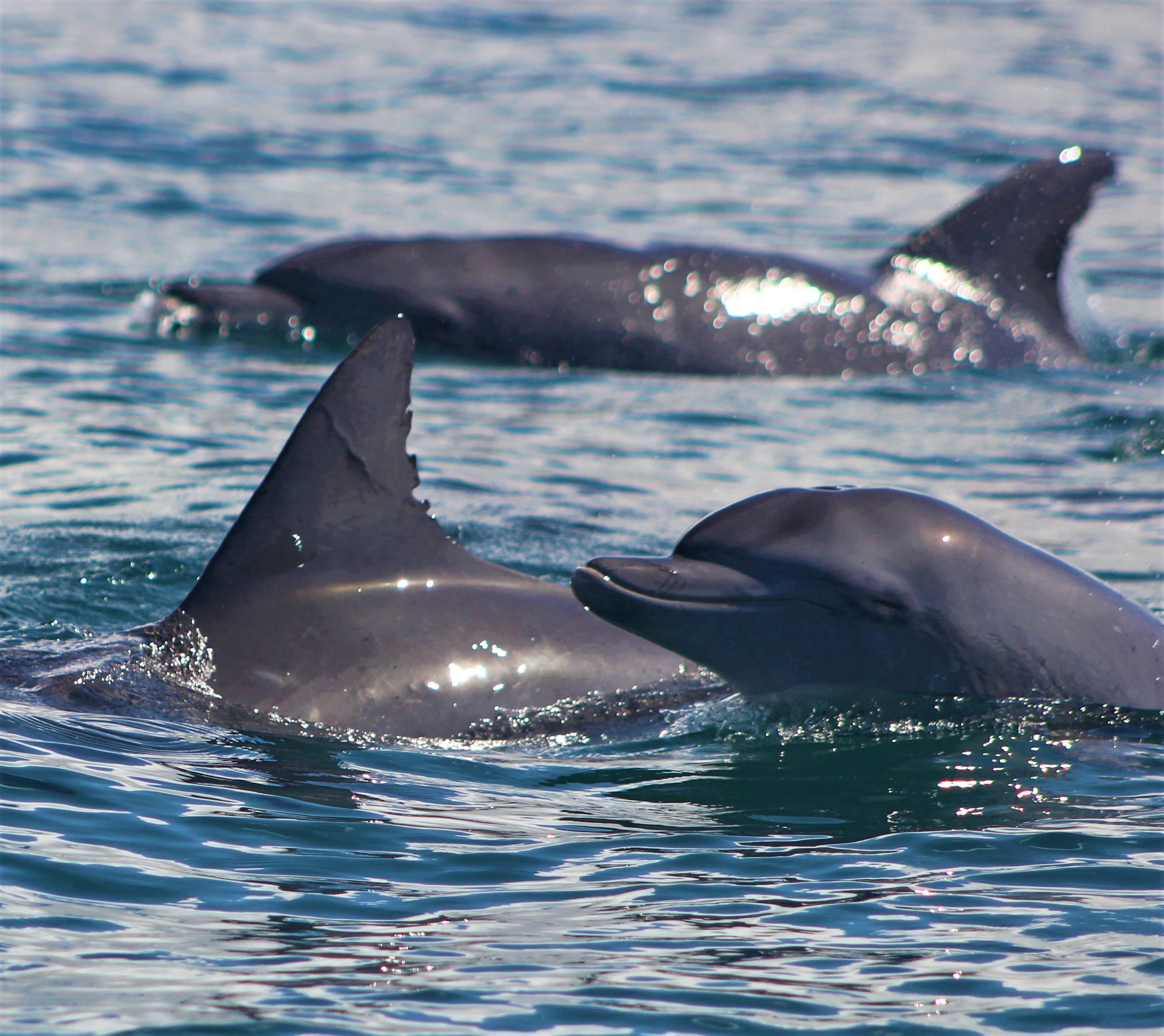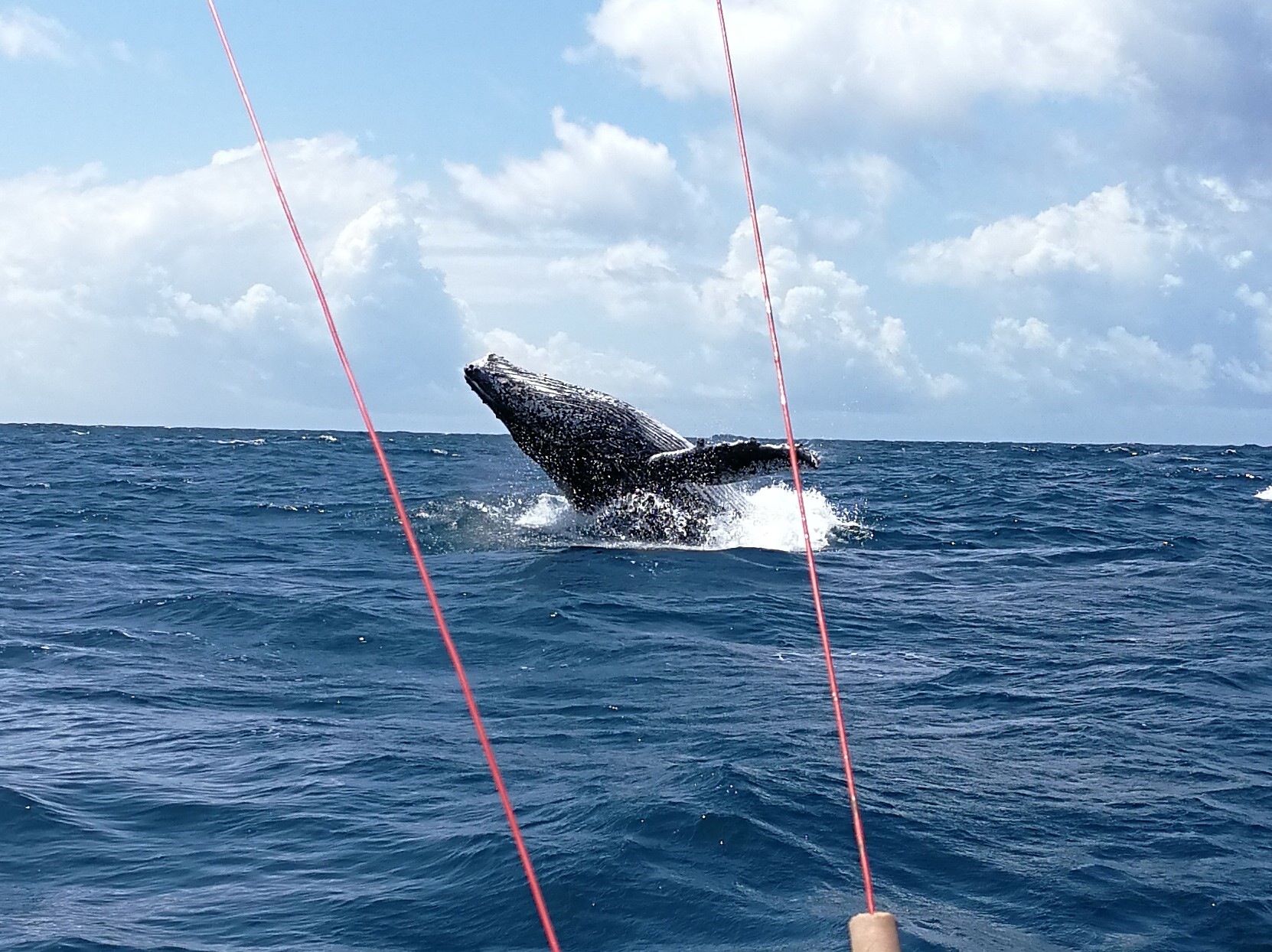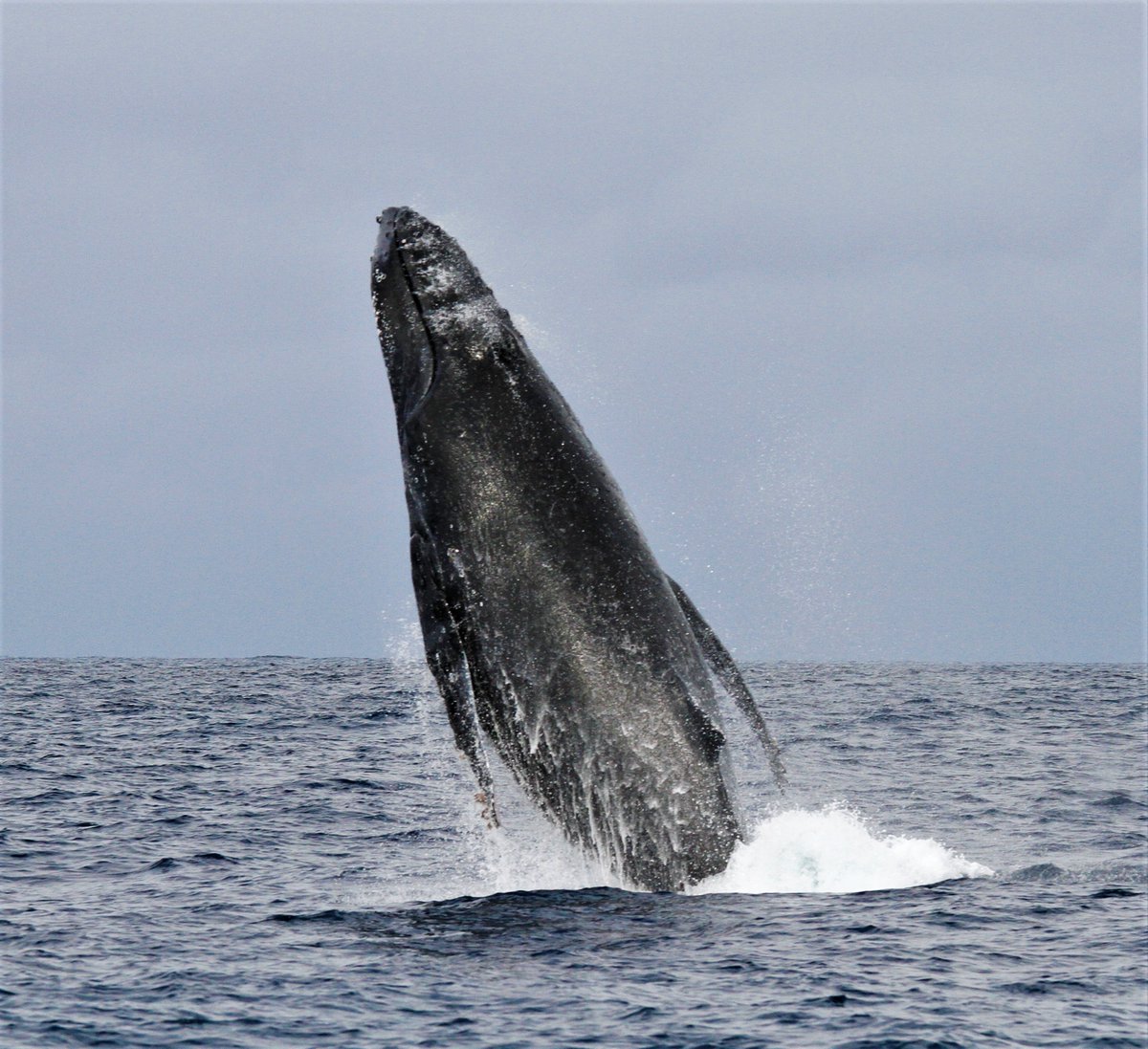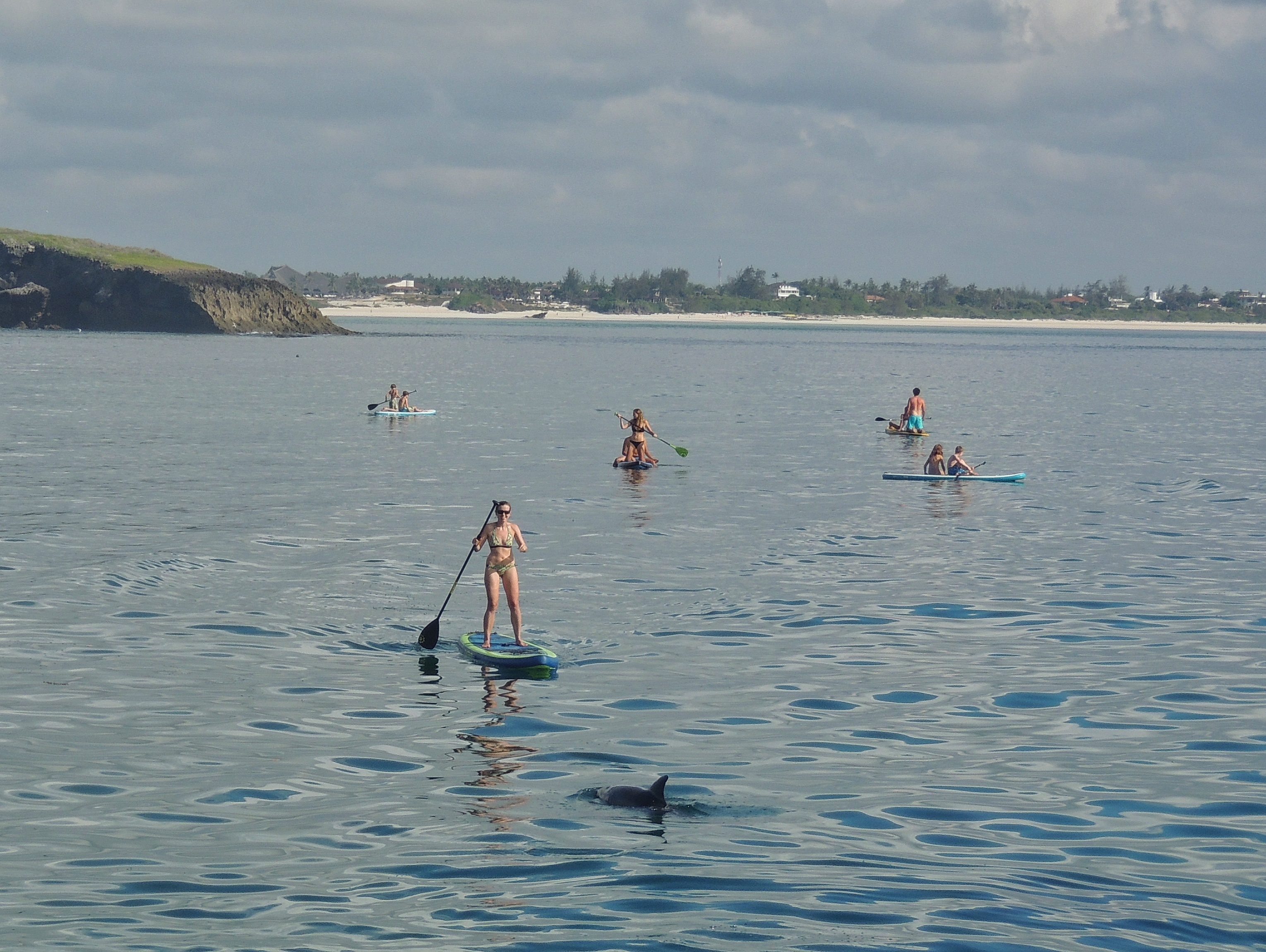A DAY IN WATAMU: ADVENTURES WITH WHALES AND DOLPHINS
Date published: 1/08/2018
Date published: 1/08/2018
I am not your usual guest writing about my travel experiences in Kenya. My home is Kenya, but it wasn’t always this way. As a London lawyer, with 25 years of city life under my belt, the last place I expected to be was the quiet fishing village of Watamu on the north Kenyan coast. I have always loved the fast life of London, the restaurants, theatres, clubs and the vibrant mix of people and cultures that it offers. Yet, I also had a yearning for something else. That thing was Kenya.
It had always been a childhood dream to visit Africa, a mystical country to me, with wildlife and people completely outside of my experience. All I needed to do was make a life change, and this I did in a matter of months to travel with my husband, Steve, a marine biologist, to Watamu a small village on the Indian Ocean. And so began my transition from city lawyer to conservationist. However, during my continuing 14-year adventure in Kenya I have found Watamu far from sleepy or slow, getting involved in rescuing sea turtles, or collecting data on our dolphins, or entertaining film crews and watching whales leap into the air, my life is full and action-packed more than ever before.

Watching Cute Dolphins in Watamu
The last thing I expected to find myself getting involved with when I was working in London, was dolphin and whale research. I have always loved animals, but the domestic type; the usual dogs, cats and horses were the limit of my experience. I had once seen a captive dolphin trapped in a small tank at Universal Studies in Los Angeles, but that basically was it.
Even after living in Watamu for 6 years I had never really seen or heard about the dolphins in our protected Marine Park until 2010. As far as whales were concerned, it was possibly a myth that they even existed in Kenya. So, it came as a great surprise to find myself on the “White Bear” – the beautiful sports fishing vessel operated by Hemingways Watamu and designed by Lady Delamere in the 1950’s for her and her friends -, years later looking for whales and dolphins off the fishing ‘Banks’.
Fast forward to 2018 and we are on the beach. We have been studying marine mammals now for 8 years and we are with our favourite supporters, African Fund for Endangered Wildlife more commonly known as Giraffe Centre, and of course Hemingways Watamu aboard “White Bear”. It’s 7am on a bright sunny morning and the Indian Ocean is glistening with whale and dolphin possibilities. Before Watamu Marine Association and myself started researching marine mammals in 2011, we knew very little about them, but now we know that Kenya boasts at least 22 different species. In Watamu, we are lucky enough to have a resident family pod of 141 Indo Pacific bottlenose dolphin individuals. Other species are migratory, like the humpback whales, which comes from the Antarctic to breed and give birth to their young in the protected tropical waters of Kenya.

A Humpback Whale seen in Watamu.
A frisson runs through all of us as we board the Hemingways vessel. This is the perfect boat for the 8 of us to see the ocean from the elevated height of the bridge. Today we are in favour, as we head out to the fishing Banks, we spy a couple of mating sea turtles, well three mating turtles to be exact. Two males compete for the favours of a single lady, as they gasp for breath on the surface of the water.
Farther on we pass by some of our familiar dolphin families – a pod of 15 mothers with 6 calves. We can tell them apart by their unique dorsal fins on their backs, as individual as a thumbprint. We give the dolphins identification numbers and also names, and immediately spot the most familiar,“Bosi” or number 14 with her damaged old fin, very distinctive. She is feeding with her ‘best friends’ Kesho and Ndio. All three have calves who are 6 months old. The babies will stay with the mothers until they are weaned at 2 years old. At that point they will form their own new alliance and move away from the family pod or may choose to remain. Watamu’s protected lagoons are perfect for these mother and calf family pods, with plenty of fishing to be had. We are all fortunate to be situated in the Malindi Watamu National Protected Park and Reserve, overseen by the watchful eye of Kenya Wildlife Service.
But we are really here to see the whales, these amazing 30 ton,17 metres long marine giants, and if we are very lucky they will leap for us. Not many people, even as I write this, know that Kenya is home to the humpback whales during their migration from Antarctic and South Africa, travelling north along the East African coast. Fishermen say that they have seen them as far back as 30 years ago, after hunting ceased in the area, and numbers have gradually increased over the decades. Humpbacks are the most acrobatic of whales, jumping out of the water to communicate and play, they are thrilling to watch. Suddenly our hearts jolt as Jackson the Skipper of White Bear, shouts out ‘Whales off the bridge, 10 degrees starboard!” Now our hearts are pumping wildly, as we crane our necks to catch a glimpse of these charismatic animals. And then we see them, three whales, their dorsal fins skimming the surface of the water, as they surface and exhale 2 metres of water high into the air. “Thar she blows!” It’s like watching an iceberg with one eighth of their bodies visible, and their remaining bulk out of sight in the ocean.

A leaping Humpback Whale in Watamu
We are looking at a mum and calf with an ‘escort’. The escort is a third whale whose job it is to protect the other two. The escort in this case is a male, typically smaller than the female, and he is trying to get between us, the boat, mum and baby. The curious calf is having none of this and wants to take a good look at the boat and its strange bipeds on board. We are treated to some spectacular leaps and tail slaps as the calf cavorts around with the typical energy of a youngster. Because we are adhering to good dolphin and whale watching guidelines we keep our distance of 100 metres, and stay with the animals for only 20 minutes, before we get a shout on the radio from a neighbouring boat to say that more whales have been sighted.
It’s a whale bonanza! A kilometre away we see a commotion on the ocean, water spraying wildly into the air. Will we see another leap? We make our way cautiously towards the action and can just distinguish part of whales’ bodies thrashing around. I am often asked why whales leap around, and the answer is simple, to communicate, remove parasites or just because they want to play and have fun. Whales contrary to many people’s beliefs are smart sentient animals (no, they are not fish) and often just as social as human beings. We are 100 metres now away from the whales, which is the safe limit for us and them, and we can see clearly that they are waving their pectoral fins (front lower body fins) which are over a quarter of their own body length at a whopping 4.6 metres. This is where they get their Latin name from, “megaptera novaeangliae” meaning “big winged New Englander”, the area where they were first discovered and hunted. As I’m passing this information to our guests, there is a flash in front of the boat as one of the whales completes a half body breach right in front of our eyes. Our guests in unison make the sort of squealing sound, so high pitched, only dogs should hear, ouch! We frantically lift our cameras with 300mm lenses to try to catch the leap, and disappointingly get the aftermath, a splash of white water. Often whales will perform a series of jumps, but this was not our day. Still wanting more, but again abiding by good whale watching guidelines we move off back to shore.
Dolphins and whales, as I mentioned are residential or migratory and we are continuing to build up a picture of the different species that we have in Watamu, and the rest of Kenya. Most helpful for providing this information are the fishermen and the divers, who are regularly in the ocean. During the fishing competitions between January and April, fishermen often see pods of up to 200 pilot whales, thousands of spinner dolphins and hundreds of common bottlenose dolphins. They describe the ocean as being black with dolphins and whales. Oh, and very worthy of mention is the occasional sighting of killer whales or orca, and before you ask, no they are not limited to colder waters, but are pan oceanic and are found all over the Indian Ocean. See how much I have learned living in Watamu!
One of the most special dolphin experiences is one I have not done myself, but desperately want to. It is stand up paddling with our dolphins. When the sea is very calm, it is probably one of the best eco ways of watching dolphins from a non-motorised paddle, without noise pollution from engines interfering with the dolphin’s communications. I have photographed the paddle boarders with Tribe Watersports from our research boats and note with envy how close the curious dolphins come to the non-intrusive boards often jumping in the air to get a better view. Now that’s magical!

Stand up paddle boarding with dolphins
The best times to see our dolphins and whales are –
I would also like to acknowledge the people and service providers who made the adventures possible, in addition to those already mentioned:
For more information contact Watamu Marine Associationjanespilsbury@watamu.biz
Watamu is a protected conservation area, the oldest Marine Park and Reserve in Kenya, celebrating 50 years in 2018. It is also an internationally recognised UNESCO Biosphere Reserve. It is home to the Marine Big Five of Kenya: dolphins, whales, sea turtles, billfish and whale shark.